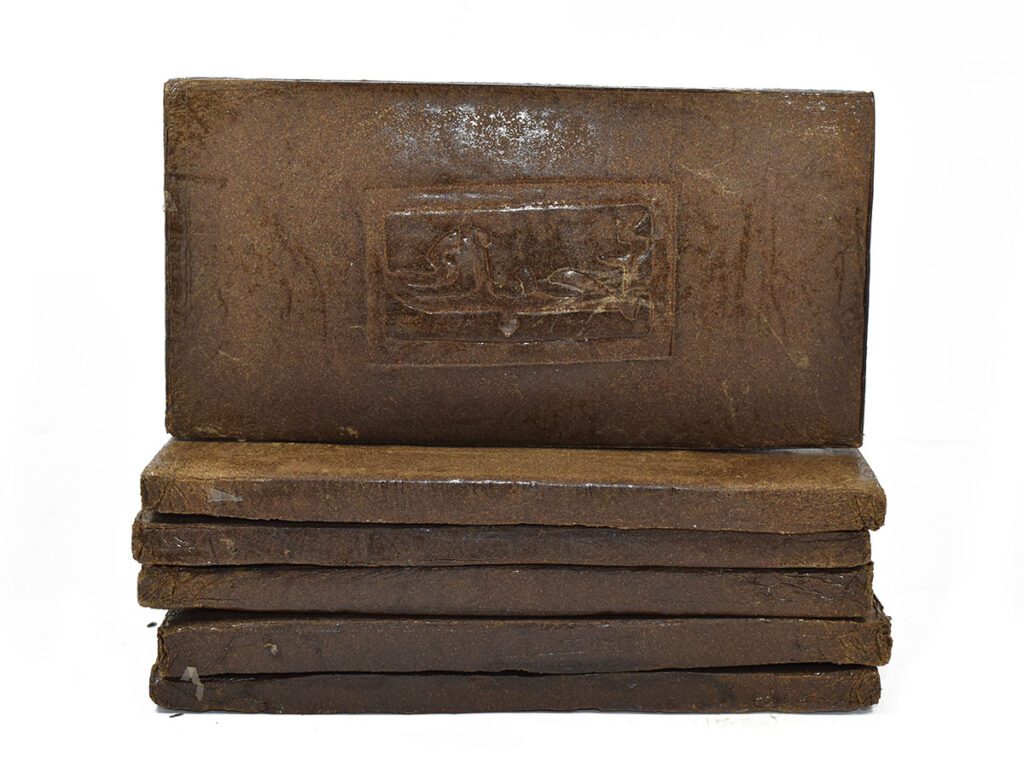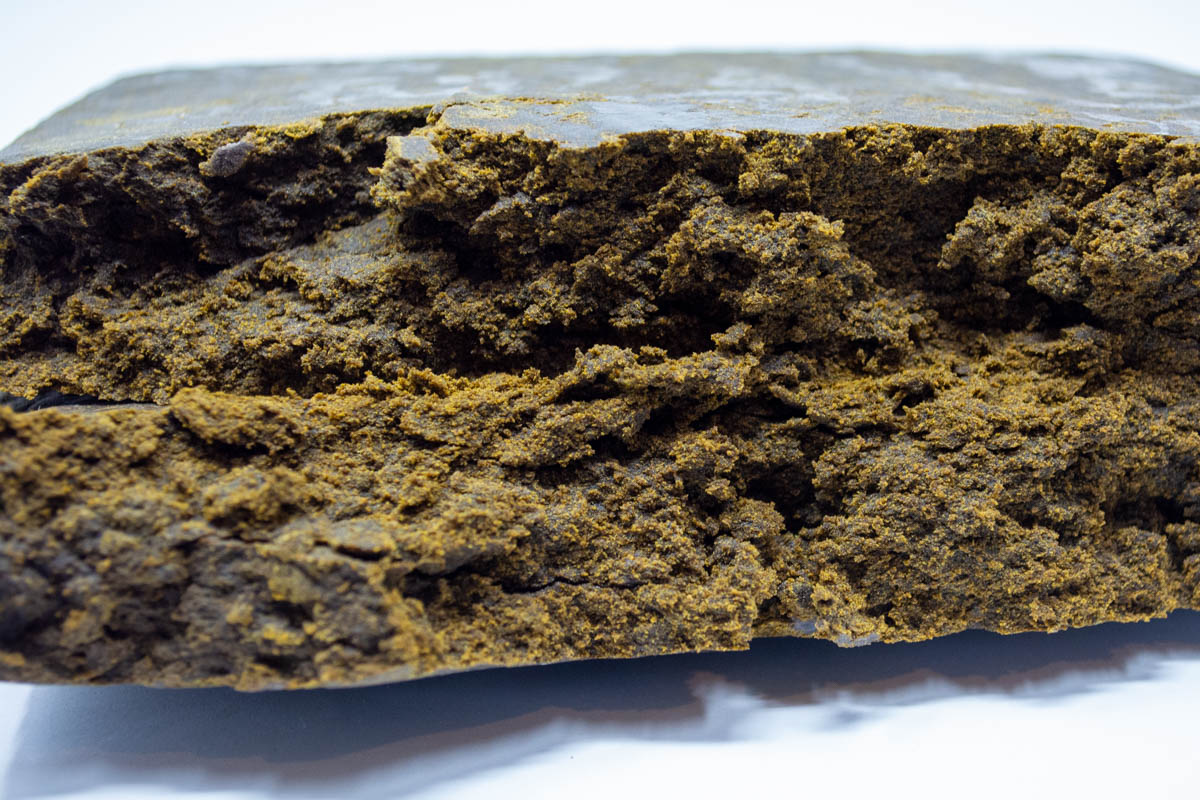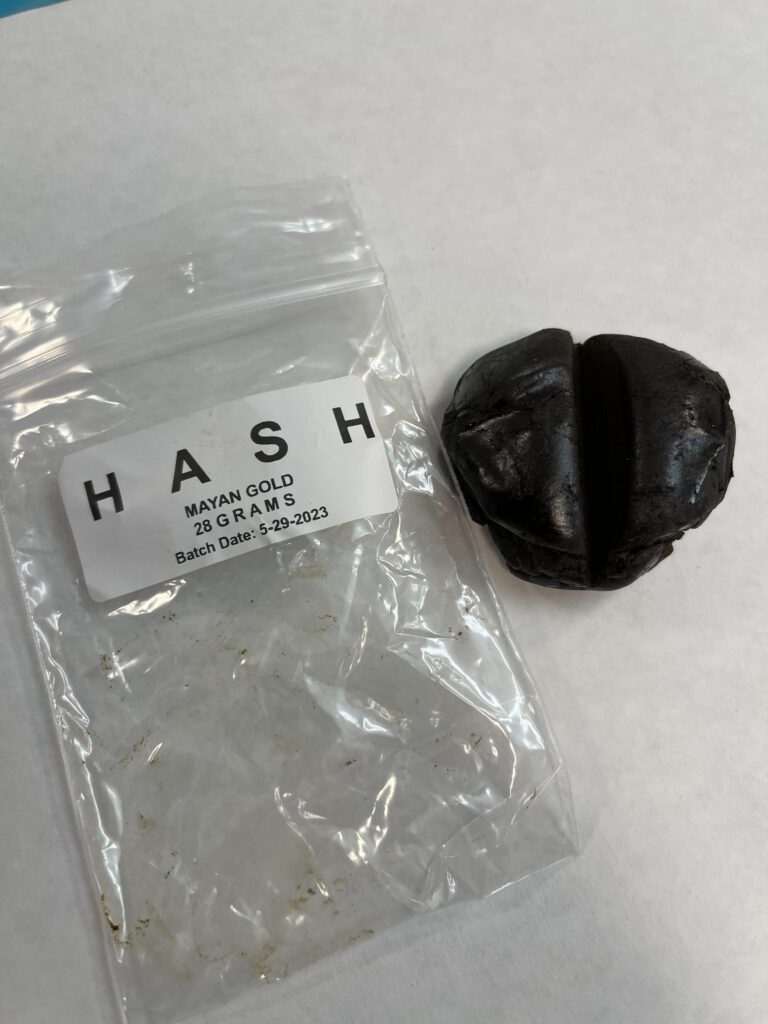
hash
Hashish, or hash, is a concentrate produced by pressing or rubbing together the resin glands of a cannabis plant to form brick, slab, or rolled pieces. Though hash is popular today, it has a long and fascinating history featuring legends of assassins, sheiks, and generals from Persia, Egypt, and other locales.
Early beginnings
The history of using cannabis for its anesthetic qualities can be traced as far back as the Neolithic period, approximately 4000 BCE. Hash consumption began a little later in Persia (primarily Iran) and Central Asia (primarily Afghanistan, Tajikistan, Turkmenistan, and Uzbekistan). It’s likely that hash, like cannabis, traveled the Silk Road out of eastern Asia to the Middle East. Early on, it was more likely used as incense than for anything else. Incense, like that produced using frankincense and myrrh, was quite valuable. These substances were also resins that had been used as medicine and in religious ceremonies for centuries.
Charas, or resin produced by gently rubbing growing cannabis plants, was the earliest form of hash. But when agriculture came into being, around 9000 BCE in India, woven sieves were developed to separate grains from plants. Those same sieves were used to separate cannabis resin from the rest of the harvested, dried plant, creating the first hash, according to preeminent hash scholar Frenchy Cannolli. Charas is still made, mostly in India, by hand-rubbing live plants. Hash is differentiated by the fact that it’s sieved, by hand or mechanically, from dried, cured cannabis.
Hash in the ancient world

hash
One of the earliest mentions of hash is in Iraqi alchemist Ibn Wahshiyya’s Book of Poisons, written in the 10th century. There are also Muslim texts from the 11th century where religious and secular leaders debated its usefulness. Shortly thereafter, a story of hash consumption was included in the book Arabian Nights. Hash was known and used in what’s now Iran and throughout the Arabian peninsula though locals seem to have blamed Mongols and Sufis for bringing the practice to the region.
Then there are the historical legends of the Nizari Ismailis, more commonly known as the Order of Assassins or the Hashishin Assassins. The Assassins, with strongholds in Persia and Syria, were a religious sect formed in the late 11th century, approximately 1090 CE. The name Assassins is “Hashâshīn” in Persian and “asāsīn” in Arabic. Legends exist that the group’s founder, Hassan-e Sabbāh (also spelled as Hasan-i Sabbah), consumed hash and provided it to his disciples to instill loyalty to the group. Scholars debate the validity of these tales, arguing that the word “Hashishin” is actually a misnomer. Hassan-e Sabbāh is said to have referred to his followers as “asāsīyūn,” which means “people who are faithful to the foundation [of the faith].”
Although no archaeological or written record provides clear evidence on whether the Assassins consumed hash as part of their traditions, the legend itself was written around 1210 CE by Arnold of Lübeck. The historical documentation of this legend in the early 13th century does link the geographic region of Persia with hash, as well as providing descriptions of the cannabis concentrate and its effects.

Meanwhile, in 1206 CE Genghis Khan had united the Mongol tribes and moved them from Russia to Persia and Central Asia, taking cannabis and hash use with them.
The use of hash continued to gain in popularity in Egypt to the end of its medieval period and throughout its time as an administrative division of the Ottoman Empire, despite prohibitive policies and harsh punishments by authorities.
Once it reached Egypt, the spread continued. Berber tribes from North Africa are said to have introduced hash to one of its modern-day havens, Morocco. However, hash production didn’t take off in the country for some time.
Later, hashish spread across the Middle East, Northern Africa and into Europe. Many of the earliest written mentions of hashish come from poems debating whether the substance, like alcohol, is prohibited by Islam. According to some, Napoleon’s armies brought hashish to Europe when they returned from the Egyptian Campaigns in the first years of the 19th century. A fad of orientalism was at that time sweeping Europe. A false rumor arose, linking the use of hashish to certain groups of Arabic assassins. This romantic idea later inspired a group of French artists, including Baudelaire, Balzac, Rimbaud and others, to form the Club des Haschischins in Paris in 1945, where they ate hashish in the form of a paste, mixed with almonds and washed down with soup.

hhhhh






